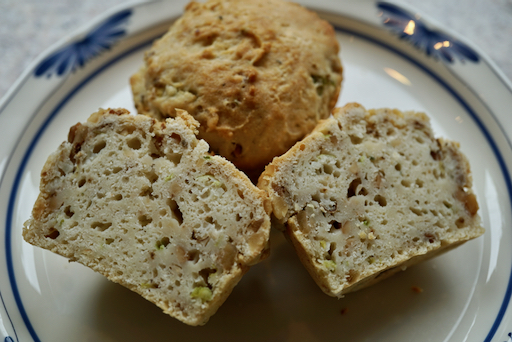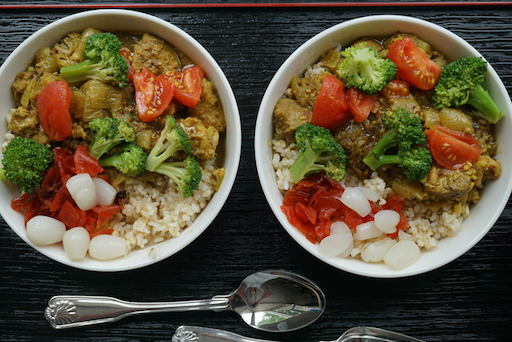My wife is into making panna cotta in some small jar we cam across recently. The amount is perfect for us as dessert. This time she made strawberry panna cotta. When we get fresh strawberry, I usually wash the strawberries, hull, cut into small pieces (small one quartered and large ones quartered and then halved). I place the strawberries in a sealable container, add some sugar (depending on how sweet the strawberries are) and and triple sec to taste. Then marinate them for a while in the refrigerator. This makes even not-so-good strawberries palatable and we eat as is or add it to the yogurt. She used these marinated strawberries for panna cotta.
Ingredients:
1 tsp gelatin
1 1/2 Tbs. water
1/2 cup 4 % milk
1/4 cup sugar
1/2 cup strawberry puree (marinated strawberries as described above pureed)
1/2 tsp. vanilla
1 cup buttermilk
Sauce;
Strawberry puree to top off the jars
Directions:
Bloom the gelatin in the water. Warm the milk and sugar in a saucepan until the sugar is dissolved. Use the hot milk mixture to temper the bloomed gelatin until it is completely dissolved then add it back into the warm milk mixing to thoroughly combine. Add the strawberry puree and vanilla to the buttermilk and stir completely. When the milk sugar mixture has cooled to room temperature add the buttermilk mixture. Distribute to the serving jars (or containers). (Fills about 6 of the small jars). Put in the refridgerator until it becomes firm. When it is firm top with the rest of the strawberry puree.
This is a lovely refreshing dessert. The texture is very creamy. The bright slightly sweet strawberry flavor completely infuses the milk mixture and is very nice with the slight tang of the buttermilk. A perfect way to end a meal.















